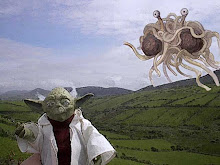
By LiveScience Staff
posted: 23 January 2008 03:13 pm ET
 Dinosaurs were likely annihilated by an asteroid that impacted the Earth 65 million years ago. Credit: Art by Tyler Keillor/Photo by Mike Hettwer, courtesy of Project Exploration, copyright 2007 National Geographic
Dinosaurs were likely annihilated by an asteroid that impacted the Earth 65 million years ago. Credit: Art by Tyler Keillor/Photo by Mike Hettwer, courtesy of Project Exploration, copyright 2007 National GeographicDinosaur doomsday was wetter than scientists have thought, according to new images of the crater where the space rock that likely killed the dinosaurs landed.
Sixty-five million years ago the asteroid struck the coast of the Yucatan Peninsula, and most scientists think this event played a large role in causing the extinction of 70 percent of life on Earth, including non-avian dinosaurs.
Geophysicists now have created the most detailed 3-D seismic images yet of the mostly submerged Chicxulub impact crater. The data reveal that the asteroid landed in deeper water than previously assumed and therefore released about 6.5 times more water vapor into the atmosphere.
The images also show the crater contained sulfur-rich sediments that would have reacted with the water vapor to create sulfate aerosols. Continue reading story


No comments:
Post a Comment